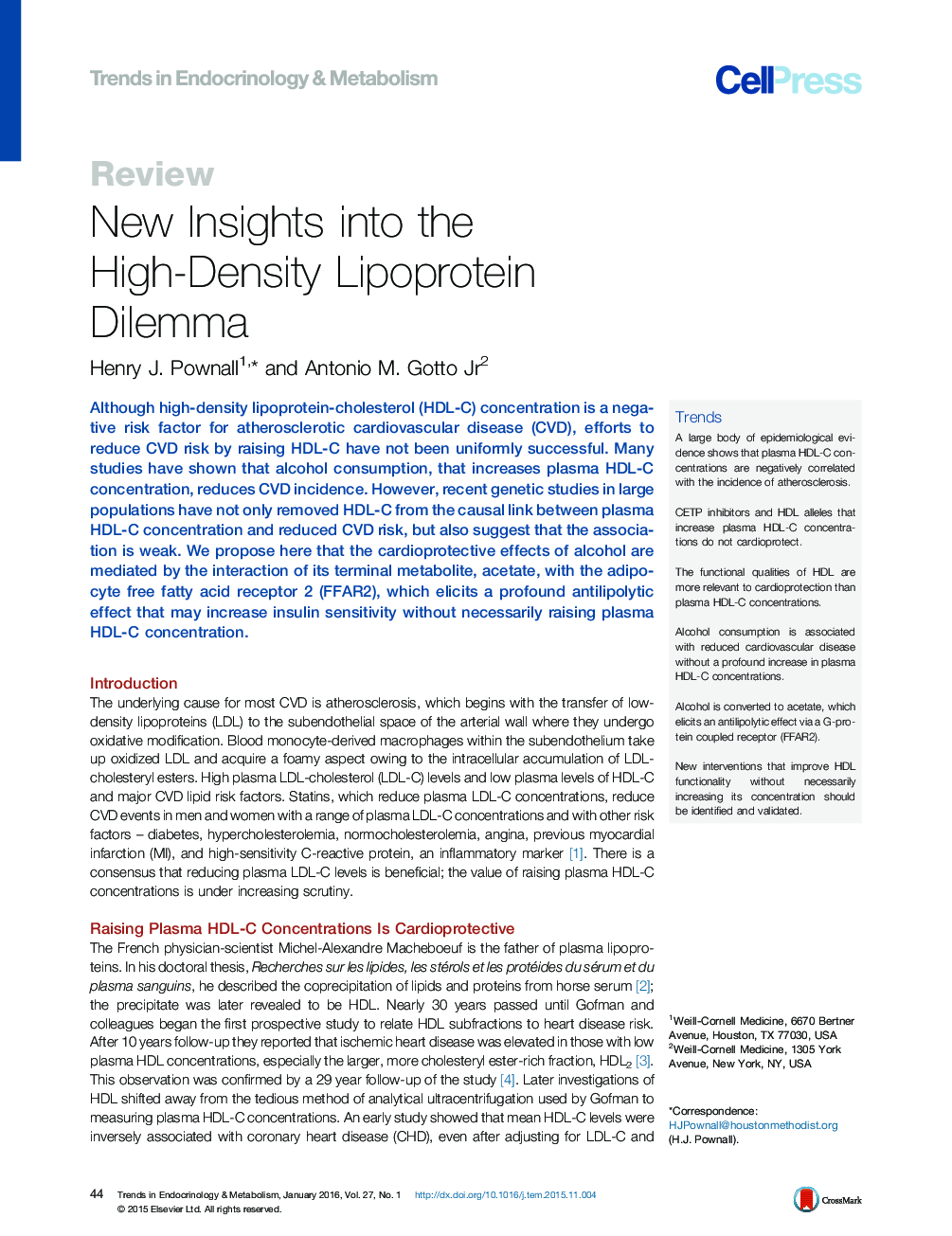| Article ID | Journal | Published Year | Pages | File Type |
|---|---|---|---|---|
| 2810130 | Trends in Endocrinology & Metabolism | 2016 | 10 Pages |
Although high-density lipoprotein-cholesterol (HDL-C) concentration is a negative risk factor for atherosclerotic cardiovascular disease (CVD), efforts to reduce CVD risk by raising HDL-C have not been uniformly successful. Many studies have shown that alcohol consumption, that increases plasma HDL-C concentration, reduces CVD incidence. However, recent genetic studies in large populations have not only removed HDL-C from the causal link between plasma HDL-C concentration and reduced CVD risk, but also suggest that the association is weak. We propose here that the cardioprotective effects of alcohol are mediated by the interaction of its terminal metabolite, acetate, with the adipocyte free fatty acid receptor 2 (FFAR2), which elicits a profound antilipolytic effect that may increase insulin sensitivity without necessarily raising plasma HDL-C concentration.
TrendsA large body of epidemiological evidence shows that plasma HDL-C concentrations are negatively correlated with the incidence of atherosclerosis.CETP inhibitors and HDL alleles that increase plasma HDL-C concentrations do not cardioprotect.The functional qualities of HDL are more relevant to cardioprotection than plasma HDL-C concentrations.Alcohol consumption is associated with reduced cardiovascular disease without a profound increase in plasma HDL-C concentrations.Alcohol is converted to acetate, which elicits an antilipolytic effect via a G-protein coupled receptor (FFAR2).New interventions that improve HDL functionality without necessarily increasing its concentration should be identified and validated.
